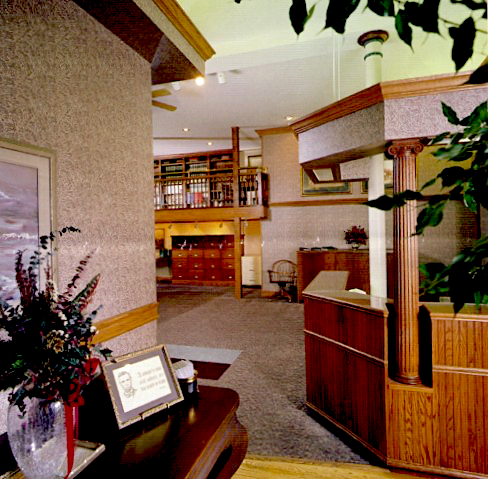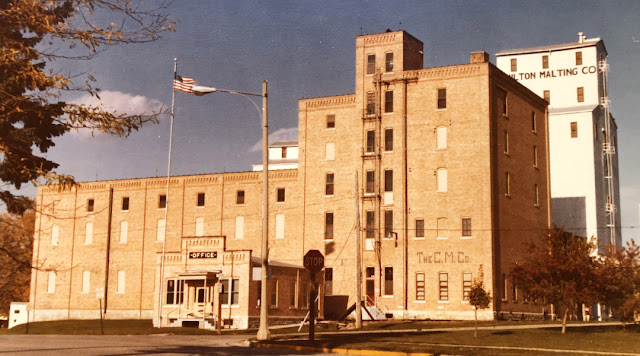When Oblio's Lounge re-opened on April 12, it marked the beginning of another chapter for one of Oshkosh's best-known and longest-lived bars. Oblio's had been closed for more than six months beginning last October when COVID-19 infections were spreading rapidly in Oshkosh. Locking the door was a step that owners Mark Schultz and Todd Cummings didn't take lightly.
 |
| Mark Schultz (left) and Todd Cummings of Oblio's. |
"We thought that what we were doing was right for us and the community," says Cummings. "I don't begrudge anybody for staying open. We have 42 years of business here, so it's a little bit different for us. It was just what we thought was right for us and our customers."
"That was the thing," Schultz says. "We think what we did was the right thing for our situation. Some people disagree. That's their right to disagree. But we were both on the same page this whole time."
It was just the second time in the past 135 years that the beer had stopped flowing at 432-434 N. Main Street. The building that is home to Oblio's was built in 1884 from a plan drawn by noted Oshkosh architect William Waters. The first saloon there, the Schlitz Beer Hall, took up residence shortly thereafter.
 |
| The sign for the Schlitz Beer Hall appears at the upper right. Circa 1887. |
Schlitz Brewing purchased the building in 1886. At the time, there were already more than 80 saloons in the city. All but six of them sold nothing but locally-made beer. The Schlitz Beer Hall was one of the few places where variety was featured. The saloon
became the 19th-century equivalent of a craft beer bar. Everything from Pilsner and Vienna lager to porter and stout was served there.
 |
| More than just pale lager; the Schlitz beers of1891. |
It was a precocious start for a location that would go on to have more influence on the beer culture in Oshkosh than any other series of saloons or taverns in the city's history. But that high profile wasn’t always advantageous.
At the turn of the century, the Beer Hall became the target of prohibitionists who lobbied city hall to have its saloon license revoked. When Prohibition arrived in 1920, the Beer Hall became a speakeasy. The now renowned taproom was the sight of the first raid in Oshkosh by federal agents on a doomed mission to stem the flow of illegal liquor here. In 1927, during the depths of Prohibition, the bar was finally forced to close. It remained closed for the next nine years.
 |
| What is now Oblio's Lounge is shown at the extreme left, circa 1927. |
Though the recent, six-month closure of Oblio's was comparatively short, it felt much longer for Mark Schultz and Todd Cummings. “It's become such a part of our DNA after doing it all these years," says Cummings.
When he and Schultz purchased the building in 1985 they became just its fourth owner. By that point, the two of them had already been running Oblio’s for 6 years and had managed to again make the bar into a destination for beer enthusiasts.
 |
| 1997 |
The roots of craft beer in Oshkosh were established at Oblio's. But at the moment, things are different. Almost half of the bar's 27 tap lines are not currently being used.
"After we closed, we emptied all of the beer lines and had the distributors take the kegs back," says Schultz. “ We're gradually building the line-up back up. At this point, we want to make sure we're only putting fresh beer on.”
“We're also doing smaller barrels," Cummings says, "which is quite a bit more expensive. We want to keep the beer flowing and fresh. We're trying to ease back into it with a nice balance of beers."
Balance has long been a hallmark of the tap list at Oblio’s. It's become something of a rare take in a craft-beer market besotted with gimmickry. “Our demand isn't that great for those sorts of beers,” Cummings says. “We've dipped our toes into that, but overwhelmingly that's not what our clientele is asking for. Maybe it’s a clientele that's a little more experienced; or knowledgable. I don't want to sound condescending, but I think Oblio's customers come in looking for certain types of beer. We're not pushing an agenda, we're more trying to provide what our customers want.”
It’s that relationship with the customer that Cummings and Schultz say they missed the most during the time Oblio’s was closed. “There was never the thought of not reopening,” Cummings says. “It’s more than just Mark and me, it's this building and its history and the generations of people who come here. There's a lot of feeling of family here.”
“We really missed everybody,” Schultz adds. “It's so good just to see them again.”
NotesA slightly different version of this post will appear in Wednesday’s Oshkosh Herald.
This piece touches only lightly on the deep history of this bar. There’s so much more to the story. You can find the full story in two parts
Here and
Here.







































